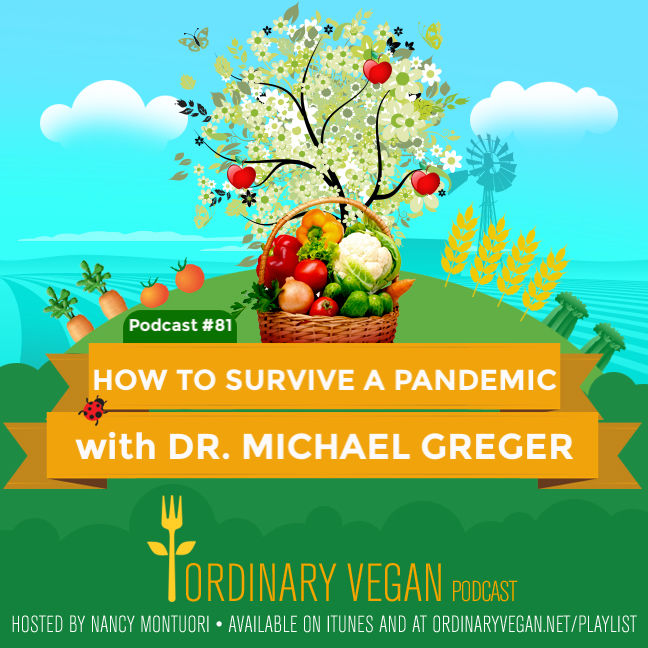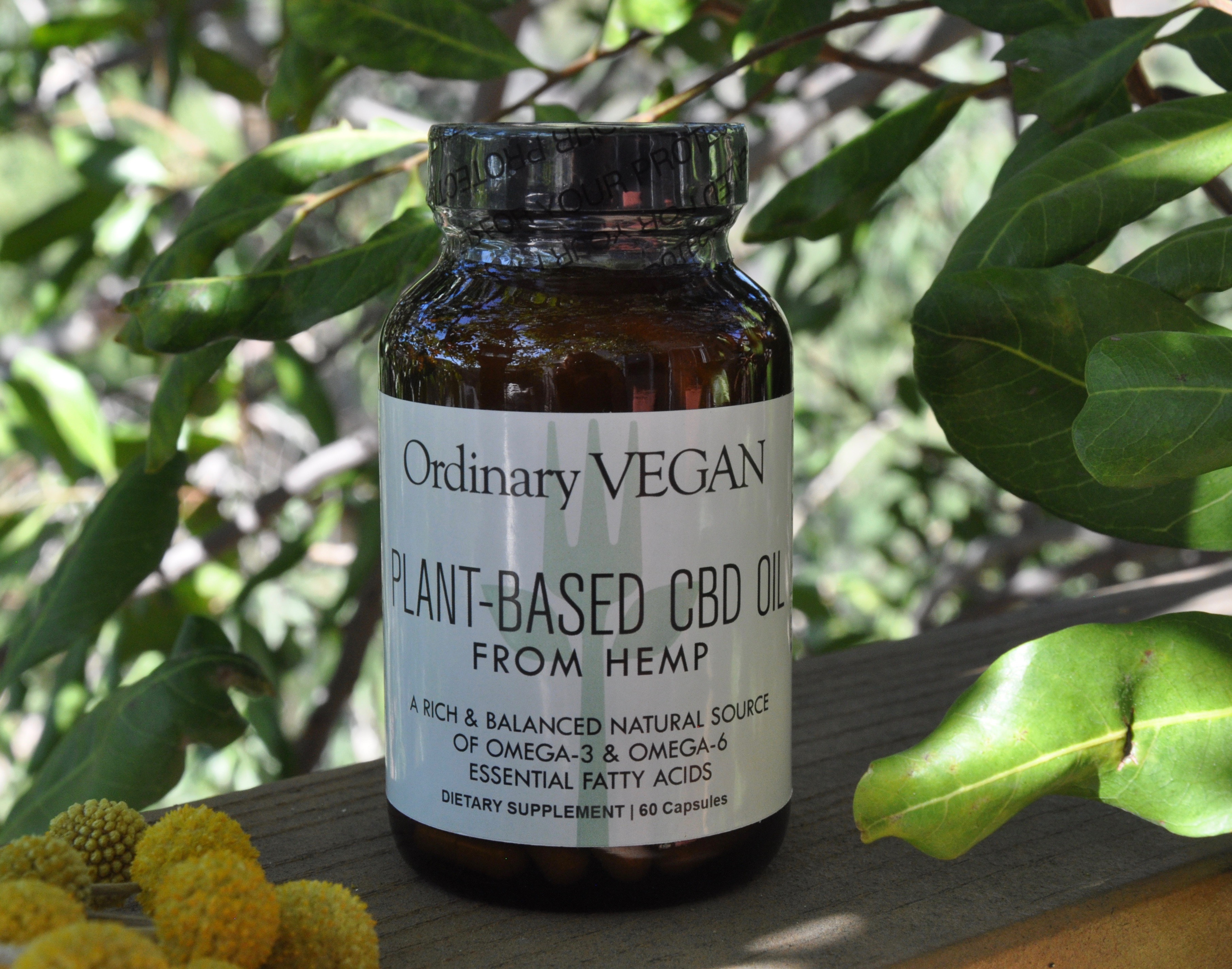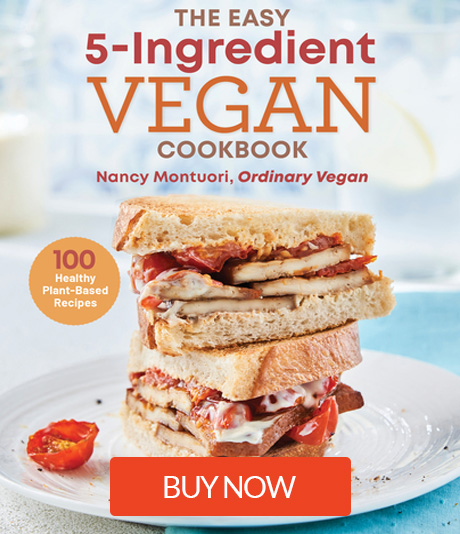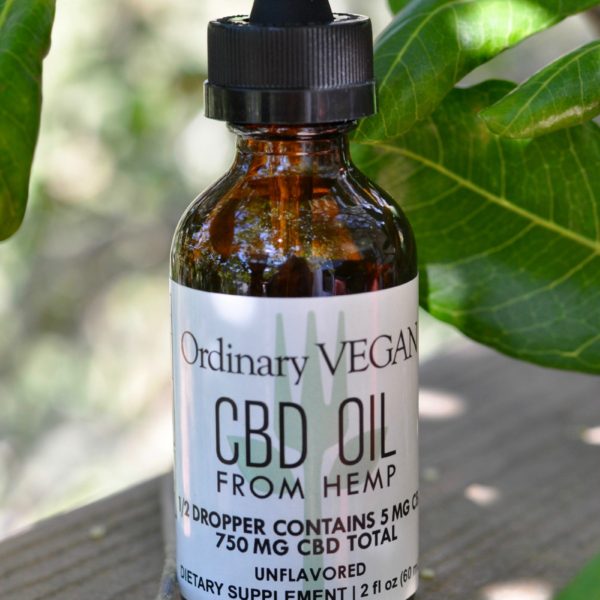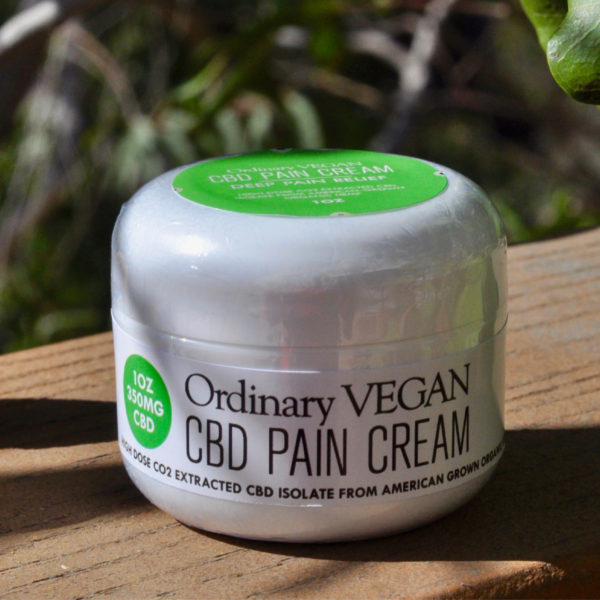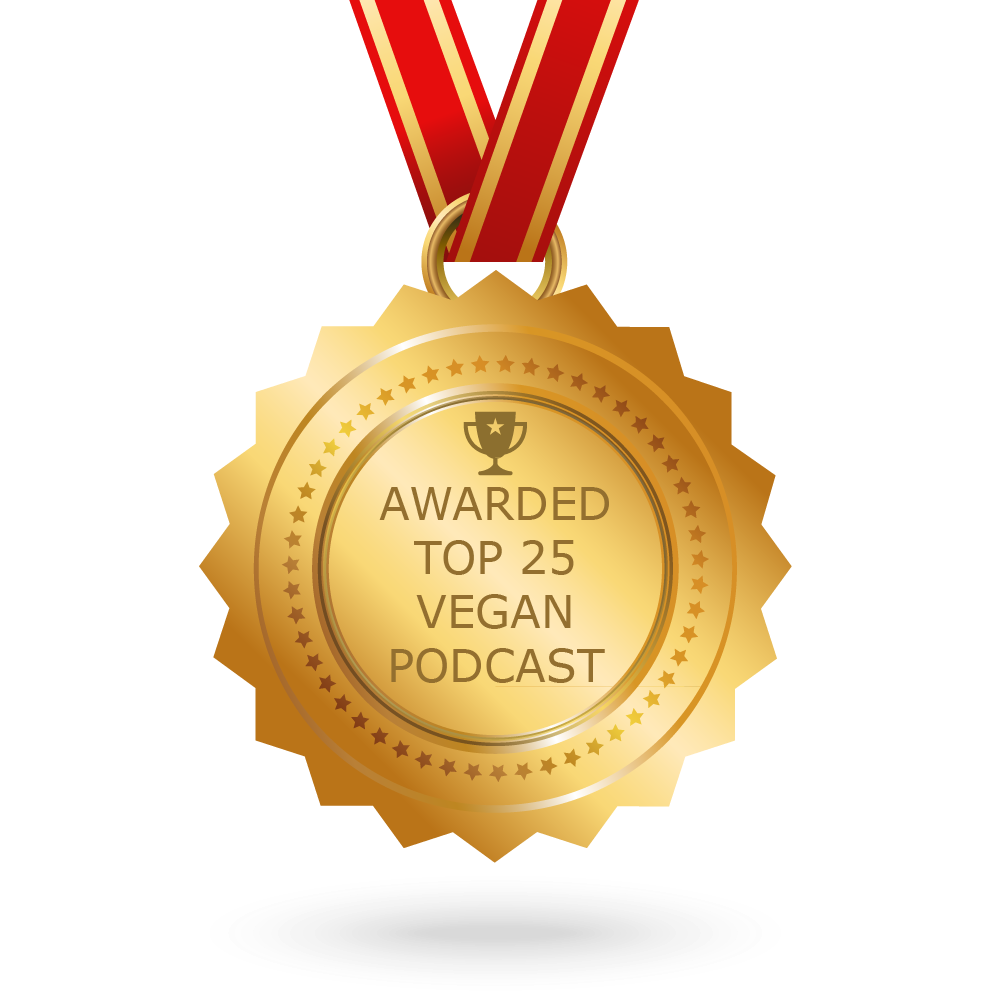Podcast Transcript
Nancy: Today’s podcast sponsor is Hover. Hover.com specializes in domain names. And if you are ready to start something new, head over to hover.com/ordinaryvegan for 10% off.
Intro: You’re listening to the Ordinary Vegan Podcast, where we teach you everything you need to know about adopting a plant-based diet full or part-time. Our goal is to empower you to live a long and healthy life.
You can find today’s show at ordinaryvegan.net on iTunes. If you have any questions, please send an email to questions@ordinaryvegan.net.
Nancy: Hello friends and welcome to the Ordinary Vegan podcast number 81, How to Survive a Pandemic with our favorite plant-based guru, Dr. Michael Greger. I am very excited about having him on, as you can probably tell. Dr. Michael Greger is a physician, New York Times Bestselling Author, an internationally recognized speaker on nutrition, food safety, and public health issues. He is the founder of nutritionfacts.org, which is a strictly noncommercial, science-based, nonprofit, public service provided by Dr. Greger.
His latest books, How Not to Die and How Not to Diet became instant New York Times bestsellers, and 100% of all proceeds from his books, DVDs, and speaking engagements have always and will always be donated to charity. His new book, How to Survive a Pandemic, is now available in audio and digital format on his website nutritionfacts.org and will be available in paperback on August 18. I will put a link to all his books in this week’s show notes.
Now, if we haven’t met, my name is Nancy Montuori and I’m the founder of Ordinary Vegan. This podcast, the website, the book, The Easy 5 Ingredient Vegan Cookbook, and the Ordinary Vegan line of vegan CBD oil made from hemp. I am here to serve you and my number one job is to keep you healthy and happy. I accomplish that by advocating a lifestyle that nourishes and heals. I hope everyone is staying safe and well. I know there’s a lot of confusion out there about how to stay safe, but I know Dr. Greger will help us out with that today.
Speaking of safety, please be careful when disinfecting food packaging and surfaces. If you use a disinfecting wipe on a surface that may come in contact with food or be placed in the mouth like a spoon or a baby bottle, be sure to rinse the surface with water and dry it after wiping with a disinfectant. According to consumerlab.com, a Clorox spokesperson told them that Clorox Disinfecting Wipes can disinfect plastic packaging that is nonporous, but packaging should not have any holes that would allow the disinfectant to make direct contact with the food. The wipes should never be used directly on food and should not be used on paper or cardboard packaging. Also, Clorox wipes have a shelf life of only one year from the date of manufacture, and Lysol indicates two years for its wipes.
Another warning issued this past week was from the FDA and they want consumers to stop using nine hand sanitizers because they contain methanol. Methanol, sometimes called wood alcohol, is poisonous. Methanol exposure through the skin or by ingestion can result in nausea, vomiting, headache, blurred vision, permanent blindness, seizures, coma, permanent damage to the nervous system, and even death. The agency warned that consumers who have been exposed to this hand sanitizer containing methanol to seek immediate treatment. All nine hand sanitizers are manufactured by a company called E-S-K-B-I-O-C-H-E-M. The manufacturer date is April 1, 2020. I will put the list in this week’s show notes.
Last but not least, I want to mention face masks. Both the Centers for Disease Control and Prevention, known as the CDC here in the US, and the World Health Organization, now recommend masks for the general public, because health experts agree that the evidence is clear and that masks can help prevent the spread of COVID-19. There is also growing evidence from scientific studies about respiratory droplets and the ability of various masks to block them. I will put links to those studies in this week’s show notes. Other studies are showing that mask mandates lead to a slowdown in the daily COVID-19 growth rate. So, it is so important that we wear our masks anytime we are out in public.
There is also a lot of confusion about the type of mask we should wear and how well your mask fits is crucial to protect yourself. It should cover the nose and mouth and have a snug fit. The sides of the mask can’t be open, or you are not being protected. Researchers found that sheets of tightly woven cotton, 600 threads per inch, plus two sheets of chiffon made from polyester and spandex seem to make the most effective combination filtering out 80% to 99% of particles. That study suggests that the performance of the 600-thread cotton combination is comparable to that of an N95 mask, which is used by healthcare professionals. According to another new study conducted by researchers at the University of Chicago, fabrics with tight weaves such as that high-thread count cotton, natural silk-chiffon weave, and flannel, were effective and can provide good protection. Researchers also found combining different fabrics in multiple layers to be very effective.
That study also discovered that scarfs and bandana material had the lowest scores and were[?] not protection against COVID-19 particles. I hope all those tips help keep you safe.
So, let’s get started. But before we do, I would like to thank this week’s podcast sponsor, Hover. I know a lot of you are exploring exciting new directions in your life, and that may involve an online website. Well, Hover wants you to start that something exciting with them. With Hover, you can register a domain name for your next venture. Hover has over 300 domain name extensions to choose from when building your brand online. No matter what you want to build, there’s a domain name waiting for it, from .dev to .app to .design to .blog to .store and so much more. Take it from me, you’ll find excellent technical support available to answer any questions you may have. Hover knows you will do something that will make a difference. Grab your domain name and many more at hover.com/ordinaryvegan for a 10% discount on new purchases. Make a name for yourself with Hover.
Now, let’s welcome Dr. Michael Greger. Hello, Dr. Greger. I know you are the busiest man in the plant-based world and we are very grateful to have you join the Ordinary Vegan community today and discuss your new, very timely book, How to Survive a Pandemic, which is available now to preorder on nutritionfacts.org. And the audiobook is available right now. Hi, Dr. Greger.
Dr. Greger: Hello. Wonderful to be here, and the e-book is available as well.
Nancy: Oh, thank you. Okay, so I have so many questions and I know we don’t have a lot of time. I believe you’ve been talking about pandemics for years from what I have read. So, the first thing I wanted to address with you is the connection between animals and viruses.
Dr. Greger: Yeah, it’s a great question. Over the last few decades, hundreds of human pathogens have emerged at a rate unprecedented in human history. Wait a second, emerged from where? Mostly from animals. The AIDS virus is blamed on the butchering of primates and the bushmeat trade in Africa. Mad cow disease was because we turned cows into the carnivores and cannibals. SARS and COVID-19 have been traced back to the exotic wild animal trade. But our last pandemic, swine flu in 2009, arose not from some backwater wet market in Asia, but was largely made in the USA on pig operations in the United States. Thankfully, swine flu only killed about a half a million people, but the next time we might not be so lucky.
Nancy: Do you think that animals will be the source of our next pandemic?
Dr. Greger: Oh, well, that’s the source of all human viruses, is from animals and as devastating as COVID-19 has been, may just be a dress rehearsal for an even greater threat waiting in the wings of chickens. According to the CDC, the leading candidate for the next pandemic after COVID-19 is a bird flu virus known as H7N9, which is 100 times deadlier than COVID-19. Instead of 1 in 250 cases dying, H7N9 has killed 40% of the people. In fact, the last time a bird virus jumped directly to humans and triggered a pandemic, it caused the deadliest plague in human history, the 1918 Pandemic, that killed 50 million people and that had a 2% death rate. We had a pandemic infecting billions with death was closer to a flip of a coin. But the good news is there’s something we can do about it. Just as eliminating the exotic animal trade and live animal markets may go a long way towards preventing the next Coronavirus pandemic, reforming the way we raise domestic animals for food may help forestall the next killer flu.
Nancy: So, if we stop raising animals for our food–?
Dr. Greger: Well, look, when we overcrowd thousands of animals in these cramped filthy football field-sized sheds beak to beak or snout to snout atop their own waste, it’s just a breeding ground for disease. The sheer numbers of animals, the overcrowding, the stress crippling their immune systems, the ammonia from the decomposing waste burning their lungs, lack of fresh air, lack of sunlight. Put all these factors together, what we really have is a perfect storm environment for the emergence and spread of the so-called super-strains of influenza. But the bottom line is it’s just not worth risking the lives of millions of people for the sake of cheaper chicken.
Nancy: Well, China just suspended imports from COVID-19-impacted Tyson plant in Arkansas. Do you think a COVID-19-infected person can infect the food in a food plant?
Dr. Greger: Theoretically, the virus could certainly be passed on. Utterly destroyed by cooking. You could imagine how there could be some kind of contact transmission, but again, theoretical, the primary means of transmission though is through respiratory droplets, being in a confined, crowded space close to others, that’s really the primary transmission. There’s never been a single case confirmed to be traced back not only to food, but even handling food. The people who are disinfecting packages and things coming into their homes, it’s certainly not going to hurt, but there has not been a single case of transmission attributed to that. Yes, wash your hands, but primarily distance, distance, distance. You want to stay away from other people. Whether they look healthy or not, that’s the way. You cannot get the virus unless the virus can get to you.
Nancy: Okay, you mentioned disinfectants. What about using all these disinfectants that contain so many chemicals? Even the Lysol can that I have in my house, which I would never have had before COVID-19, states it could be hazardous to humans and domestic animals. Are we doing more harm than good wiping everything down like crazy with these chemical disinfectants?
Dr. Greger: Well, look, if you don’t like the list of ingredients on some of these commercial ones, you can make your own with bleach and water, one part household bleach diluted in 49 parts water, so like one teaspoon of bleach in a cup of water. That’ll give you the 50 to 1– we’re talking about standard 5% hypochlorite bleach. That’s all the disinfecting power one needs for this virus, unless we’re talking about cleaning up infected bodily fluids or something. But again, the surface disinfection– Look, early on, we didn’t know what the primary means of transmission was. All we knew is that people were transmitting it, we’re getting this disease, and so we didn’t know if it was because we were touching stuff, we didn’t if we were breathing. And so that’s why it was all hands-on deck, let’s just do everything.
But now, we have data. Now, it’s been a few months and we’ve realized the primary means of transmission is through being in close contact with people breathing. They don’t even have to be coughing, they can just be breathing, talking. They spit out– people spit out these tiny little microscopic droplets, which can land on our eyes, nose, and mouth, and potentially infect us. Yes, should we still wash our hands? Of course. If you have someone living with you who is suffering from illness, surface disinfection is important because you don’t want them to touch a doorknob with a hand they just coughed into and then you touch the doorknob and rub your eyes nose and mouth, that could potentially transfer infection.
Hand disinfection is a good idea all the time for not just this virus but cutting down on the common cold or influenza. I always carry alcohol-based hand sanitizer with me wherever I go. This is long before COVID-19 came around. But one does not have to worry about obsessively disinfecting surfaces if there’s no one sick in the house. This is when we suspect there’s virus afoot. But if anyone in your household has been in that household for 14 days without risky context, there’s no disease in the house, you don’t have to worry about disinfecting everything.
Nancy: What is your suggestion on a mask? Should you have a filter in your mask? Or is it okay for people just to wrap a scarf around their mouth?
Dr. Greger: The problem with masks is that it gives people a false sense of security. Any kind of mask is better than no mask, but you’re not protecting yourself. That’s the critical understanding, you’re protecting other people from you because you can be contagious before showing symptoms. For days after you come in contact with enough virus to infect you, you look perfectly fine, feel perfectly fine, but maybe exhaling virus with every breath, so protect other people from these little microscopic drops that you breathe out in conversational speech. You have something over your mouth to protect them. It’s not protecting you. It’s protecting other people from you. So, it’s a sign of respect because you’re showing that you don’t want to spread this in your community if you have it and you don’t know about it.
Now, there’s certainly better than others, and I go on and talk about scarves and pillowcases and 100% cotton t-shirts, probably the most suitable household materials, which block various bacteria and viruses, about 60% as well. Surgical mask will be preferable if there’s sufficient supply available. Other countries have provided surgical masks to every single person for free. Why don’t we do that here? It’s outrageous, that there’s been such a failure at all levels of the government to not only prepare for this pandemic but then to deal with it once it’s arrived.
Nancy: Well, in your opinion, here in Los Angeles, we’re very fortunate because we can get tested for free. I got tested, it took a half-hour, and I didn’t have to get out of my car. In your opinion, should everyone get tested for COVID-19? If so, which tests are best?
Dr. Greger: At this point, it’s like the mask situation. Well, yes, we know what’s best, but we need to reserve– because of the scarcity, because of the inadequate, ill preparation, we want to reserve these more effective masks for frontline workers. Similar with testing. If we had enough tests, then, oh my God, ideally, everyone would get tested. In fact, everyone can get tested every single week. And we find out exactly who’s infected, who has come in contact with in the last week. We could put a stop to this. There are countries that have done extensive testing. But here, there are so few tests and each of these tests requires specific chemical reagents, swabs, things like that, which are in relative short supply, unfortunately. And so, we want to reserve tests for people that are symptomatic, to see if they have it. We want to reserve tests for those that come in contact with people who are vulnerable. So, workers in nursing homes, that kind of thing, or for research purposes.
But, yeah, there’s no reason to run out and get a test if you have no reasons to suspect, but if you’re trying to make a decision as to, should you go visit the grandparents and you want to make sure you’re not infected, you don’t even need a test. You just stay away from people for 14 days and poof! You’re not infected and you don’t come in contact with anyone before seeing whoever is vulnerable.
Nancy: Now, can we talk about the severity of COVID-19 and how it varies widely? Besides senior citizens, who is at higher risk for serious illness with COVID-19?
Dr. Greger: Those primarily with underlying risk factors, and that’s obesity, heart disease, high blood pressure, and type 2 diabetes, all of which, as an aside, can be controlled or even reversed with healthy enough, plant-based diet and lifestyle. But you don’t have to be obese, even just being overweight, so having a body mass index of 28 or more, which is about 175 pounds at the average American height, puts you nearly six times the odds of suffering a severe COVID-19 course. In the United States, the average BMI exceeds 29. So, even being skinnier than the average American puts you at so much excess body fat, that could still be extremely high risk. Look, this is the time to take care of yourself. If you are privileged enough not to have to be on the front lines right now, well, let’s take this opportunity. Two, get sufficient sleep, keep active, reduce stress, stay connected albeit remotely with friends and family, and eating a healthy diet.
Nancy: I just read some early studies suggesting that people who landed in the hospital with COVID-19 had low levels of potassium. You have a very famous daily dozen list of foods that you recommend eating every day, are there any foods that we can consume to help protect us from this virus?
Dr. Greger: Well, there’s lots of foods packed with potassium, beans and greens, both of which are my daily dozen, but one would not expect eating potassium-rich foods to protect oneself from the virus. Look, there are amazing studies that show that simple foods can indeed boost your immune system, like randomized, double-blind trials showing that eating broccoli sprouts, for example, can reduce viral loads for influenza, decrease virus-induced inflammation, boost our antiviral natural killer cell activity, all from just eating broccoli. But this isn’t the flu. Unlike other common viruses, coronaviruses have not been shown to cause a more severe disease in immunosuppressed patients. Why? Because it’s our own immune response that appears to be the main driver of lung damage during infection. Starting about the second week of symptoms, the virus can trigger what’s called a cytokine storm, which is an autoimmune reaction where your body overreacts and then attacking the coronavirus, your lungs can get caught in the crossfire, and burning down the village in order to save it, we may not survive the process.
That’s why I certainly support general common-sense advice to stay healthy during the crisis, but don’t recommend we take supplements or eat specific foods to boost elements for our immune system until we really understand more about this virus.
Nancy: Are there any medications that we should avoid taking during the pandemic?
Dr. Greger: Oh, that’s a really interesting question. I have a chapter on that in the book. There’s classes of drugs that affect the level of expression of the receptor to which the virus attaches to in the body.
There are this class of blood pressure drugs called ACE inhibitor drugs like captopril, basically blood pressure drugs that end with the words “pril.” So, enalapril or lisinopril, there’s a whole bunch of them. I talk about this little flowchart in the book on those who have– most people given these drugs are not for heart failure or severe uncontrollable hypertension. They just have stable mild hypertension being controlled with these drugs. For those, your doctor may want to consider pulling you off of them temporarily.
Another class is ibuprofen. Simple, like Motrin, over-the-counter anti-inflammatory drug. There’s a question whether or not that may increase one’s susceptibility. It’s an unanswered research question, but either way, we should not be taking these anti-inflammatories for respiratory infections. They’ve shown with other respiratory infections to make things worse, not better. We don’t want to bring down our fever internally if we can afford it. Fever is an antiviral response from our bodies, so one of our ways our body fights off infection. If you’re febrile, sponge the forehead with a cool cloth to make you feel better, but you should not try to decrease your internal temperature unless it reaches dangerous levels.
Nancy: Really, that’s very interesting. In your opinion, does vitamin D play a role in COVID-19 severity?
Dr. Greger: Vitamin D plays a role in immune function, so does zinc and vitamin C, but having sufficient levels is all one needs, taking extra on top of sufficient levels has not been shown to be beneficial. So, you want to make sure that you have vitamin C sufficiency, and that means that you are on a regular basis, eating vitamin C rich foods, like broccoli, bell peppers and tropical fruits and citrus fruits. And you are eating zinc-rich foods, like any of the seeds, so that’s beans, legumes, nuts, and seeds, whole grains. For vitamin D, that’s the sunshine vitamin that you get from adequate daily sunshine. If for whatever reason, you’re stuck inside and can’t get enough sun, you can take a vitamin D supplement.
Nancy: Every virus mutates, so can you tell us what that means?
Dr. Greger: Some viruses mutate more than others. So, that means it changes its genetic code. We see this a lot with the so-called zoonotic viruses, these animal to human viruses. The way that they can adapt a new species is by changing its genetic code.
Viruses aren’t really alive, it’s basically just a set of DNA or RNA, set of genetic instructions, which hijacks your own cell, which is alive and makes it– basically turns it into a virus factory to make more of these little genetic bits that can then spread. Viruses, particularly the so-called RNA viruses like influenza, like coronaviruses don’t have sufficient proofreading capability when they emerge from the cell. So, each virus that comes out of the cell is a little bit different than the others. This is the downside of that from the virus’ standpoint is a lot of these viruses are so mutated, they don’t even work. They don’t even survive. They can’t take over other cells. But the benefit for the virus is that each one’s a little different. If there’s one that better adapts to infecting the next cell over or better adapts to infect a whole another species, and therefore expanding its range, it may indeed take advantage of it, kind of an extreme survival of the fittest circumstance. It can allow these viruses to become more efficient at spreading and can jump from one species to another.
Now, but just because of viruses mutating, doesn’t necessarily mean it’s getting more dangerous. A virus can be mutating to avoid the immune system, for example, and just try to evade vaccine immunity, for example, and not necessarily become more dangerous in the process.
Nancy: Did you start writing this book before the COVID-19?
Dr. Greger: Well, the first half of my professional life was actually in emerging infectious disease, something I’ve written extensively about. I wrote a book about pandemic prevention, preparedness back in 2006. So, I’ve long been immersed in this science, but shouting it from the rooftops and nobody’s listening. I kept telling, “The pandemic is coming, buy your toilet paper now.” But no one listened. Then so, yeah, I moved over to the lifestyle diseases, the leading killer until the next pandemic. Heart disease has been the number one cause of death in the United States for the last hundred years from 1919 to 2019. The reason it’s only been leading killer for 100 years is because in 2018, the leading killer was pandemic flu, just like the leading killer this year may change as well. So, I was like, “All right, well, no one’s listening me about pandemics, I’ll just move over to what’s killing most of us now.” But knowing back of my mind, it’s coming and that one of these days, I’ll be able to dredge back up all the hard work I had done and get it out to the world, and people will actually listen.
So, most of the research was done prior to the pandemic. Of course, I had to add a couple chapters on the new virus and the new pandemic and what’s the peculiarities to coronavirus. But beyond that, the bulk of the work was done. That’s how in one month’s time, I could come out with a 600-page book with 3,500 citations.
Nancy: Wow. So, you are the perfect person to ask this question. What is your prediction for the future of this virus? Will we ever see it go away?
Dr. Greger: Well, as anyone reading my book can tell, there were all these predictions that’s going to go in the summer, and I said it’s not going to go away in the summer, and it did not go away in the summer. The only way to stop a pandemic is what’s called herd immunity, which is having a critical portion of the populace immune to the virus. An infection can only burn through a population if there are enough susceptible individuals for the viral sparks to jump from one person to the next. Immune individuals who can’t get or transmit the virus act as a fire breaks to slow the spread or like control rods in a nuclear reactor to break the chains of transmission.
Now ideally, this herd immunity is accomplished through mass vaccination. Vaccines are a way to fight fire with fire, using the virus to fight the virus by generating the benefits of infection immunity without the risks, disease, and death. Unfortunately, without a vaccine, herd immunity is only achieved the hard way through mass infection. But look, you can’t get the virus unless the virus can get to you. So, that’s why I talk about the common-sense measures we can take to reduce our risk. Then of course, even more importantly, prevent the emergence of future pandemic viruses in the first place.
Nancy: I know you have to leave, but I wanted to ask you one last question. You dedicated your book to a doctor, Dr. Li, I’m going to destroy his last name, Wenliang. Can you tell us who he is and why the dedication?
Dr. Greger: Yeah. Dr. Li. On December 30, 2019, New Year’s Eve-Eve. He was at the Wuhan’s Central Hospital. He was an ophthalmologist, and he messaged his fellow physicians alerting them to the appearance of the first cases of this disease. In response, instead of getting a medal, he was summoned before the Public Security Bureau in China and reprimanded for what they said he was spreading rumors, making false statements that disturbed the public order. Of course, he wasn’t doing any such thing. He was warning people about it. Thirty-nine days later, after becoming infected with the very virus he tried to warn the world about, he was dead himself at the age of 33. And by that time, the disease had already spread to dozens of countries. So, had we listened, have we not silenced the whistleblowers, we might not be in the situation we are today and that’s why the book is dedicated to his memory.
Nancy: Thank you, Dr. Greger, you are our favorite guest.
Dr. Greger: Aww.
Nancy: I so appreciate you being here. You’re so kind and positive and you just lift everybody up. So, thank you.
Dr. Greger: Aww, thank you so much. Keep up the wonderful work yourself. Looking forward to coming on back.
Nancy: I promise. Thank you. Bye-bye.
Thanks so much to Dr. Greger for being here today and thanks to all of you for joining us. You can find today’s show notes, me, my recipes, my 5 Ingredient Vegan Cookbook, and my vegan CBD from hemp on ordinaryvegan.net. If you have any questions, you can reach me at questions@ordinaryvegan.net. Please join our community on Facebook. Just go to facebook.com/ordinaryvegan, and please follow me on Instagram. Stay safe. Stay well. Till next time.
Outro: Thanks for joining our plant-based community today. Together, we can accomplish great things. Please subscribe so you don’t miss any of Ordinary Vegan’s recipes and plant-based tips. If you have any questions or feedback, email us at questions@ordinaryvegan.net. Until next time.
